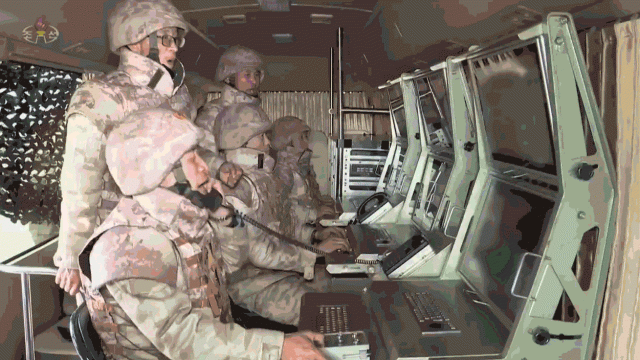Do you remember back in March when international analysts were equal parts terrified by the prospect of North Korean intercontinental ballistic missiles and bemused by Supreme Leader Kim Jong-un’s self parody-level video promoting their military might? Well, evidence produced by experts on missile proliferation and satellite imagery confirmed earlier reports that the test was even sillier than first thought.
The announced launch of North Korea’s massive “monster missile” Hwasong-17 ICBM on March 24 caused quite a stir with the international community, with fears that it could travel even greater distances with more capacity for multiple warheads than the regime’s previous missiles. However, Dr. Jeffrey Lewis, a professor at Middlebury Institute of International Studies at Monterey, California, told the folks behind the Click Here podcast that there were some major holes in North Korea’s narrative.
Lewis, an arms control policy expert who heads his university’s East Asia Nonproliferation Program, said a wealth of evidence proves Kim Jong-un’s regime took video of a previous, failed launch of the Hwasong-17, then stapled over that failure with the launch of a previously successful, smaller missile. He and his team determined that pictures taken by satellite image provider Planet showed a March 16 image of the field used in the March 24 video with burn scars on the landscape, where March 24 satellite images didn’t have any evidence of a deformed landscape that should come from a missile launch.
The video also did not appear to show acceleration like the Hwasong-17 should be capable of. Researchers further said the video seemed to be compiled of two different launches. All this is to say that the monster missile likely “went kablooey” on an earlier test launch, according to Lewis.
Two images — one released by North Korea, another taken on March 16 by @planet — leave little doubt that the video North Korea released of a “successful” launch of a new ICBM on March 24 was, in fact, from the failed launch a week earlier. https://t.co/CqmBMhPg11 pic.twitter.com/9obMDeJIyT
— Dr. Jeffrey Lewis (@ArmsControlWonk) August 9, 2022
“The simplest answer is they launched the big one on March 16,” the arms control policy expert told the podcast. “They filmed it… but it blew up, and they couldn’t announce it.” It’s still unknown where the second, smaller missile was launched from.
Of course, Lewis and his team are not the first group to make this point. Back at the end of March, the South Korean Defence Ministry also endorsed analysts’ views that their northern antagonists fired an older, previously successful Hwasong-15 ICBM, while claiming it was the Hwasong-17.
Lewis’ latest findings effectively corroborate these past reports. Back at the end of March, North Korea News also similarly showed that the March 24 missile launch included footage that was filmed earlier that same month. The South Korea-based news site compared burned grass on different ends of the nearby airfield taken March 24 to compare them to images taken a week before. In addition, there were bunkers at a nearby artillery post that appeared to have changed between the two missile launch dates, but North Korea’s video of their Hwasong-17 launch did not display those additions.
There were also issues with the direction of the sun compared to North Korea’s reported timing of events. The March 24 launch supposedly took place after midday, but the video makes it appear like it happened in the morning.
In the podcast it’s mentioned the Mar 24 likely Hwasong-15 ICBM test location wasn’t pinpointed. I put this forward a few days after the test: a good candidate is right next to the Mar 16 failed HS-17 test location, judging from what looks like fresh burn scars after Mar 24… https://t.co/O4p0aJ1jLq pic.twitter.com/Z0vRKSoaKK
— Colin Zwirko (@ColinZwirko) August 10, 2022
It’s not the first time the DPRK faked a missile test. U.S. experts previously said a video of a 2016 submarine ballistic missile test produced by North Korea was also a fake.
But of course, it’s still important to remember that even with failed tests like these, North Korea still has the capability of hitting the U.S. with a nuclear warhead. Kim Jong-un has conducted dozens more missile tests than either of his predecessors combined. Lewis said that what North Korea really wants to do is put more than one nuclear warhead on a missile in order to overcome current missile defence systems. But what these fakes prove is how important this missile-based threat is to the DPRK.
“When you catch someone in a lie, then you’ve learned something really interesting about what they care about,” Lewis told Click Here podcast host Dina Temple-Raston. “You know what they want you to think, and you know what they want you to not know.”
